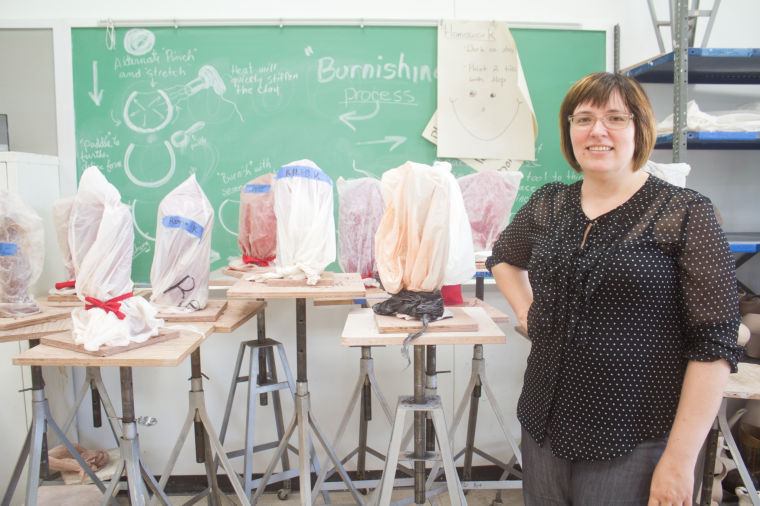Art exhibit grew from late donor’s Mexican folk art collection
Hammonds administered the Mexican Visions in Clay, The Sacred, Secular and Fantastical in Figurative art.
Honoring the memory of their deceased mother, Paul and Ken Mikeska wanted to preserve a legacy that Jean Mikeska, an elementary and middle school teacher had built. When she passed, the Mikeska brothers discovered her expansive collection of Mexican pottery. This prompted them to contact museums to donate the collection to.
“It was a whole apartment packed with things. She had a lot of nativity sets, some of which she bought, some of which people have given her,” Merry Wheaton, Austin Friends of Folk Art member, said.
The Mikeska brothers contacted Wheaton with the hope of exhibiting the collection in its entirety. Wheaton explained how the collection was kept in storage for a year and logistical steps to make an exhibition possible.
“[AFFA] had a panel discussion…to explore the possibility of creating a folk art museum here in Austin….We don’t have a donor who could put up money for a museum like that. So what we decided to do instead was to look for opportunities to exhibit in existing spaces,” Wheaton said.
Harold Liebowitz, University of Texas at Austin Professor Emeritus of Archeology, then volunteered to curate the show with Hollis Hammonds, Associate Professor of St. Edward’s University Fine Art Department, helping administer the exhibit here in the St. Edward’s gallery. The exhibit, titled Mexican Visions in Clay, The Sacred, Secular and Fantastical in Figurative Art, opens Oct. 3.
Liebowitz, Hammonds explained, is also a member of AFFA and began to look to other members for additional Mexican ceramic art pieces.
“There is going to be over a hundred objects in the show….They are all ceramic-based, they are all done by Mexican artists and craftsmen. Some are known, some are unknown…some of them are contemporary,” Hammonds said.
Wheaton explains the time period for the contemporary Mexican ceramics:
“All the art is from the 21st century. [There are no pieces] that go back beyond 1950 or so, and part of the reason for that is that all of the pieces are figurative. They are figural pieces, they are not functional pottery, and they are not bowls and vessels, which are the things that would have been made earlier.”
Works from Wheaton’s own collection will be featured in the exhibit.
“There is a plate with a country farming scene. It is done in an interesting style called petatillo (cross-hatching technique made to look like the weaving of a petate or sleeping mat). There is a plate with two naguals. A nagual is a mythic figure…it is believed to be that a person has the ability to transform into an animal and turn back. The naguals [transform into the] indigenous animals [of Mexico],” Wheaton said.
Students have a lot to look forward to even before the show.
“We invited Angelica Vasquez from Oaxaca to come and do a clay workshop, which is going to be open to St. Ed’s students, the night before the show opens on Oct. 2, at 7 p.m. in the clay room of the Fine Arts building,” Hammonds said. Vasquez will have her work featured in the show as well.
Hammonds explained the uniqueness of this particular exhibit, since this is a survey of a type of art and a hybrid between high art and craft.
“It is adding diversity to the exhibition schedule, and we very rarely look at [pieces] that are specifically Hispanic serving. This is an opportunity to do that. We typically just look at the work [as] the important thing and we think about things like culture, gender and race secondary to that.”







